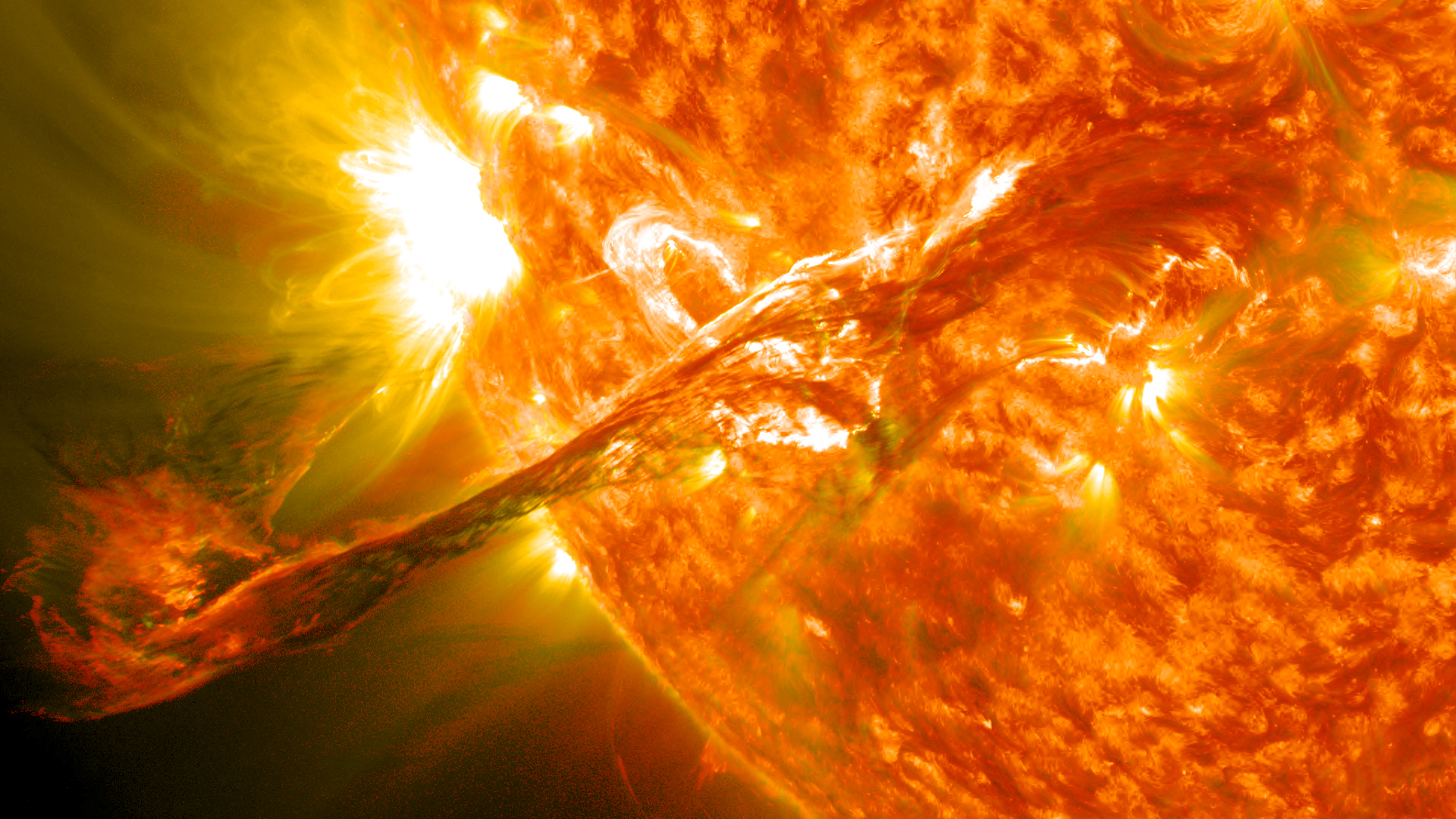NASA prepares for intense sun storms on Mars during 'solar maximum'
"I'd actually love to see the 'big one' at Mars this year — a large event that we can study to understand solar radiation better before astronauts go to Mars."

Two NASA spacecraft will pay special attention to increasing levels of radiation that bombard Mars during this year's approaching solar maximum, to better prepare astronauts for future missions to the Red Planet.
Every 11 years or so, the sun experiences a peak in activity known as solar maximum, due to its strong and constantly shifting magnetic fields. During this period of the solar cycle, the frequency and intensity of sunspots on the solar surface increases, generating solar flares and coronal mass ejections that send powerful streams of solar radiation out into deep space.
While Earth's magnetic field largely shields the planet from the effects of such solar storms, Mars is not afforded the same protections, because the Red Planet lost its global magnetic field long ago. As a result, Mars — along with any resident spacecraft or future crewed mission to the planet — is more vulnerable to intense solar activity.
Related: See the sun's surface rage as solar maximum approaches (photo)
That's why NASA's MAVEN (Mars Atmosphere and Volatile EvolutioN) orbiter and Curiosity rover will team up to study solar particles and radiation streaming toward Mars from both high above the planet and at its surface, according to a statement from the space agency.
"For humans and assets on the Martian surface, we don't have a solid handle on what the effect is from radiation during solar activity," Shannon Curry, principal investigator for MAVEN, said in the statement. "I'd actually love to see the 'big one' at Mars this year — a large event that we can study to understand solar radiation better before astronauts go to Mars."
Together, both spacecraft study the quantity of solar particles that reach Mars and how energetic they are. Curiosity's Radiation Assessment Detector instrument, or RAD, measures how the planet's thin atmosphere affects the intensity of the particles that reach the Martian surface, as well as how radiation breaks down carbon-based molecules on the surface, from which researchers can infer how much protection astronauts exploring Mars may require.
Get the Space.com Newsletter
Breaking space news, the latest updates on rocket launches, skywatching events and more!
"You can have a million particles with low energy or 10 particles with extremely high energy," Don Hassler, RAD's principal investigator, said in the statement. "While MAVEN's instruments are more sensitive to lower-energy ones, RAD is the only instrument capable of seeing the high-energy ones that make it through the atmosphere to the surface, where astronauts would be."
MAVEN and Curiosity work in tandem, such that the rover team is alerted to look for changes in the RAD data when the orbiter detects a solar flare. Therefore, the MAVEN mission also provides an early warning system for other Mars spacecraft teams when radiation levels are expected to rise, so that they may turn off vulnerable instruments.
This year's solar maximum coincides with the start of the dustiest season on Mars, which is triggered by the planet's warming atmosphere during perihelion — the point in Mars' orbit where it is closest to the sun. Therefore, if a global dust storm were to occur at the same time as a solar storm, it could lend insight on how Mars became the freezing desert it is today, according to the statement.
"While there's little water left on Mars — mostly ice under the surface and at the poles — some still circulates as vapor in the atmosphere," NASA officials said in the statement.
"Scientists wonder whether global dust storms help to eject this water vapor, lofting it high above the planet, where the atmosphere gets stripped away during solar storms," they added. "One theory is that this process, repeated enough times over eons, might explain how Mars went from having lakes and rivers to virtually no water today."
Join our Space Forums to keep talking space on the latest missions, night sky and more! And if you have a news tip, correction or comment, let us know at: community@space.com.

Samantha Mathewson joined Space.com as an intern in the summer of 2016. She received a B.A. in Journalism and Environmental Science at the University of New Haven, in Connecticut. Previously, her work has been published in Nature World News. When not writing or reading about science, Samantha enjoys traveling to new places and taking photos! You can follow her on Twitter @Sam_Ashley13.









